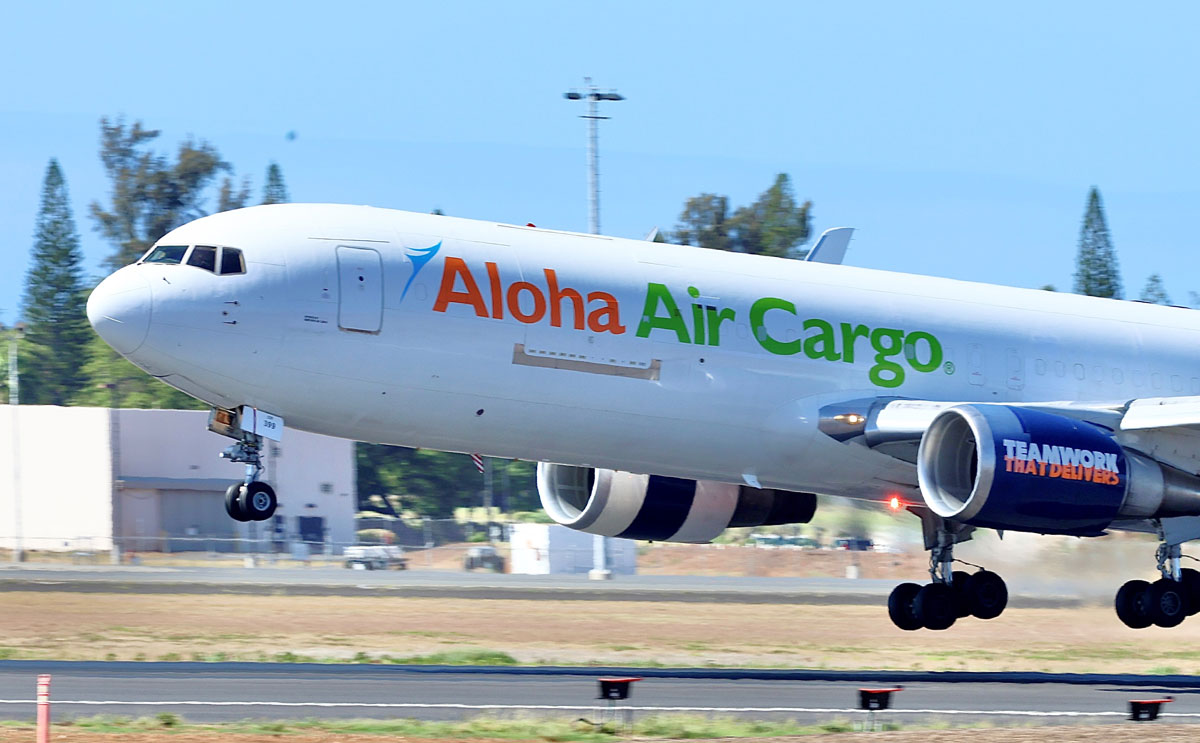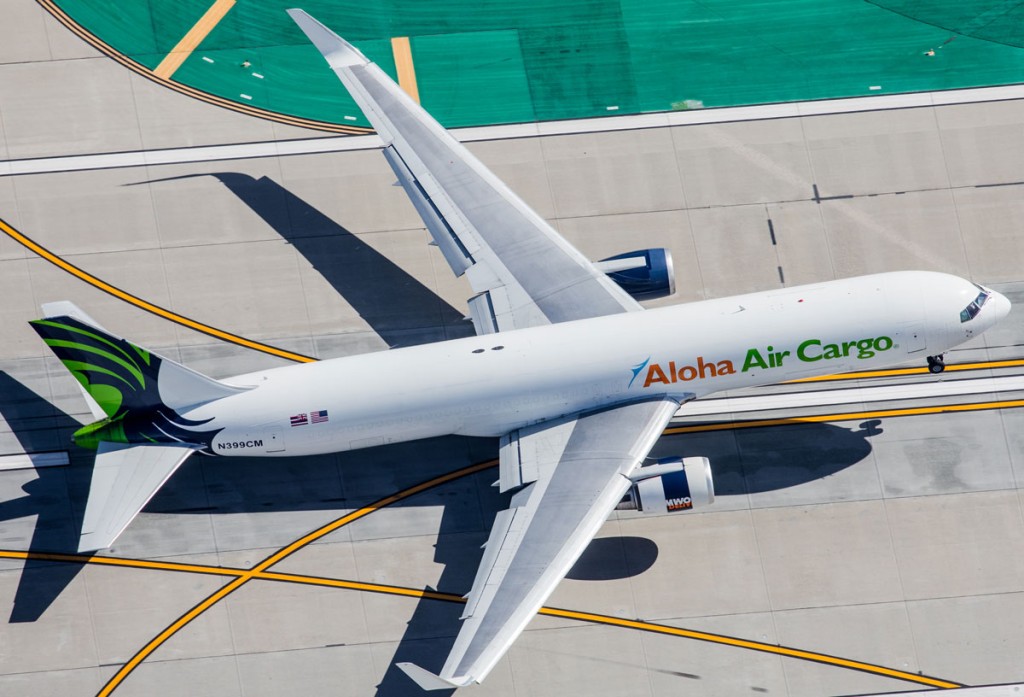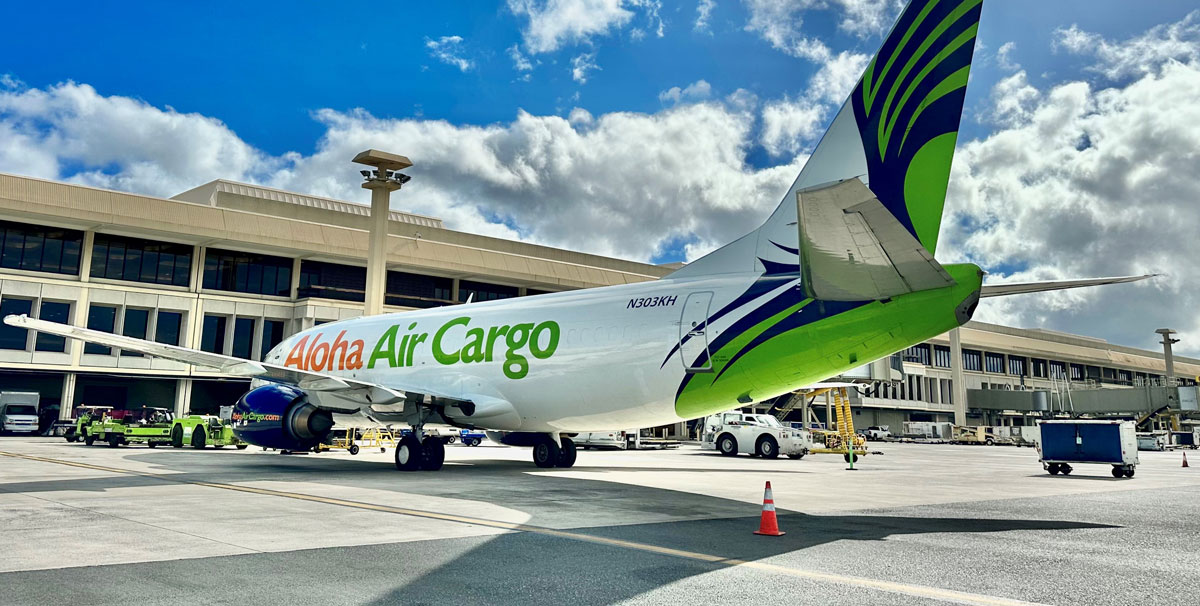
Hawaii’s air cargo community is hoping the proposed acquisition of Hawaiian Airlines by larger Alaska Air Group will go through despite a federal judge’s recent killing of the planned $3.8 billion JetBlue Airways purchase of Spirit Airlines that the U.S. Justice Department sued to stop.
Sources and insiders say both airlines will maintain their current identities and that if Alaska’s $1.9 billion buyout of Hawaiian Air goes through, they will not combine the brands into a newly named carrier.
Shareholders of Hawaiian Holdings, Inc., parent of Hawaiian Airlines, have approved the Alaska Air Group acquisition and the boards of directors of both carriers have greenlighted the proposed buyout.
“It could be an excellent deal for Hawaiian Air, and we are looking forward to it,” says Julie Nakamura, general manager of Hawaii Air Cargo, a 42-year-old Honolulu-based freight forwarding firm. “The acquisition would give Alaska Air’s shippers access to key Asian markets,” says a senior executive with a rival air carrier in Hawaii. “We are watching the pending acquisition with interest,” says Chris Palmer, director of the Hawaii Trade Lane for Lynden Logistics which has provided transportation and logistics solutions in the Hawaiian Islands for almost 40 years. “The two airlines are very important trade partners with Lynden, and we are excited to see what happens.” Another veteran Hawaii-based freight forwarder told Air Freight News (AFN) that he hopes the two airlines “keep their identities and personalities separate.”

Changes in the Works
In the past four months since the potential merger was announced and AFN reported on it, there have been some changes, mostly in the Hawaii air cargo market.
Hawaiian Air has been expanding its aircraft fleet and destinations but reducing several frequencies. The hometown carrier introduced an Airbus 330 freighter last year to fly e-commerce-sold cargo for Amazon and will “ramp up” the operation in 2024 but a Hawaiian Air spokesman declined to say how many A330 all cargo jets will be added this year. He did say Hawaiian Air will expand its A330 freighter fleet to a total of 10 aircraft, but a timetable was not provided.
The airline is expanding its passenger jet fleet this year which will add to its belly cargo lift capacity. The first of 12 Boeing 787-9 Dreamliners, which accommodate six pallets or 16 LD-3s, goes into service on April 15 on an HNL to SFO route. Some 11 more B787-9 widebody jets will phase in through 2027 but routes have not been disclosed.
According to Hawaiian Air’s director of commercial cargo Dana Knight, the 95-year-old airline currently provides considerable belly cargo lift with 24 Airbus wide-body 330 passenger planes for long-haul international and mainland markets, 18 A321 neos (cq) for transpacific HNL to midsized mainland markets and 19 Boeing 717s for neighbor island flights.
The airline is adding to its mainland route network in mid-May with A321neo non-stop service from HNL to Salt Lake City, plus flights from outer island airports on Lihue and Kona to Sacramento.
Little known is that Hawaiian Air flies belly freight on nonstop routes from HNL to Asia and the South Pacific including Sydney, Auckland, Seoul, Tokyo, Osaka, Sapporo, Fukuoka, Papeete, Pago Pago, and the Cook Islands.
On April 1, Hawaiian Air suspended three-times-weekly service from Tokyo Haneda to Kona and four-times-weekly flights from Tokyo Haneda to Honolulu. The cutbacks were “due to slower than anticipated Japan market recovery,” according to a spokesman but the airline still serves Tokyo Haneda on another non-stop route.

Lift A Plenty
The Hawaii air cargo market is not short of lift, despite the continued grounding of two Transair converted 737-200 interisland freighters by the FAA following a pilot’s forced ditching’ of a plane into the ocean near the Honolulu Airport two years ago. Transair still operates smaller British-made Shorts 360 freighters between neighboring islands. Transair officials could not be reached to determine when the larger 737-200 cargo jets will take to the air again.
A familiar flag, Aloha Airlines, rebranded Aloha Air Cargo when it ceased passenger operations in 2008, has three Boeing 737-300s, three B-737-400s, and a leased B-767-300, all freighters. A spokeswoman for the all-cargo airline, now owned by Seattle-based Saltchuk Aviation, says there are no route expansion plans “in the works” for this year.
Aloha recently inaugurated 767-300 wide-bodied freighter flights Monday through Friday from Honolulu to Seattle, knifing into Hawaiian Air’s turf. However, the airline does not fly to Asia or the South Pacific like its rival local airline does.
A favored transpacific airline among local freight forwarders, Pacific Air Cargo, operates a single 747-400 freighter from LAX to HNL six days a week. The jumbo jet, leased from Kalitta Air, moves a mix of oversized project cargoes, general freight and e-commerce shipments from North. Pacific also has access to a nose-loading 747-400 when required.
On the seventh day of the week, Kalitta operates the aircraft from HNL to Asian markets such as Hong Kong and Seoul providing added capacity to satisfy the insatiable demand of the US west coast markets.
Paul Skellon, director of marketing communications and PR for Pacific Air Cargo, says the 24-year-old airline has no immediate plans to add another freighter, but it is aggressively pursuing “full and part charters” throughout the Pacific this year. “There are many opportunities between Pacific Islands nations and the US mainland and we are extremely flexible.”
Skellon previously told the AFN that Pacific Air goes “where there are large volumes of freight and scant service.” The airline is an active cargo interliner and hauls belly freight from Honolulu to Asia and the South Pacific for a half dozen airlines ranging from Alaska Airlines, Japan Airlines, Air New Zealand, Qantas, and several other international carriers.
Other Hawaii Options
Meanwhile, Nakamura, the general manager of Hawaii Air Cargo, says while there is keen competition among Hawaiian-based forwarders and logistics specialists, there is also strong camaraderie. “We’re a tight-knit community. We don’t steal customers from each other. It is not a cutthroat business here. We are respectful.”
Hawaii Air Cargo, with its four-plus decades of experience, does not try to “be all things to all shippers,” she says. “We’re not the most expensive or the most economical forwarder In the Islands.” Nor does the firm target every airworthy commodity. “We handle hard freight, merchandise, and construction materials mainly,” says the general manager. “We do not handle animals, perishables or refrigerated freight.”
Nakamura stresses that Hawaii Air Cargo prides itself on being locally owned and based in the 49th state. “When you call, you speak to a person here rather than someone online or in a foreign country. That is our niche.”
The forwarder’s primary focus is the heavily traveled LAX to HNL route, working with major US belly freight operators—United, Delta, American, and Hawaiian Airlines—plus Aloha Air Cargo, UPS, Fed Ex, Korean Air, Japan Airlines, Philippine Airlines and Transair. With an office at Los Angeles International, it also serves the neighboring Islands with air freighters and ocean barges, says Nakamura.
She notes that Hawaii Air Cargo works exceptionally close with the locally owned 747-400 freighter operator, Pacific Air Cargo. “We both believe in very personalized customer service. They are just a few doors away from us.”
Longevity seems to be a hallmark in the Hawaiian air cargo community. Seattle-based Lynden Logistics, which has had an office in Hawaii for almost 40 years, headed by Palmer for the last 27 years, moves general freight across the Pacific but specializes in retail goods and auto parts. It does not operate freighter aircraft like its sister company, Lynden Air Cargo, does with its fleet of L-382 Hercules freighters. Instead, it moves freight to and from Hawaii aboard such carriers as Pacific Air, Aloha Air Cargo, Hawaiian Air, United Airlines, Korean Air, Japan Air Lines, All Nippon Airlines, Fed Ex, and UPS among others. Lynden Logistics also has a 12,000-square-foot warehouse at Honolulu International Airport.
Palmer echoes other local air cargo executives who contend that “Hawaii is a competitive market where everyone knows everyone. But he feels his company has an advantage over rivals because of its flexible “pay for the speed you need” philosophy. Translated, if a shipper has 10 pallets but not all the freight is time-sensitive, it will fly two or three pallets and ship the remainder by the ocean. “We work with the customer to optimize their freight routing,” he says.
Often at times, the ocean-going freight will move across the Pacific from Seattle aboard one of 34 barges owned by Aloha Marine Lines, also part of the Lynden family of companies. In March, the company announced the newest addition to its fleet—the Makani Loa, a 438-foot-long, 105-foot-wide vessel with a deadweight capacity of 16,900 tons.
Hawaii International Airport on Oahu, gateway to Asia/Pacific and the US mainland, is not adding to its cargo facilities this year nor is it expecting new air cargo operators, spokesman Russell WK Pang told Air Freight News. It currently has two million square feet of cargo space. Domestic and interisland cargo tonnage were flat in 2023 vs the previous year, but international tonnage was off 32 percent.

